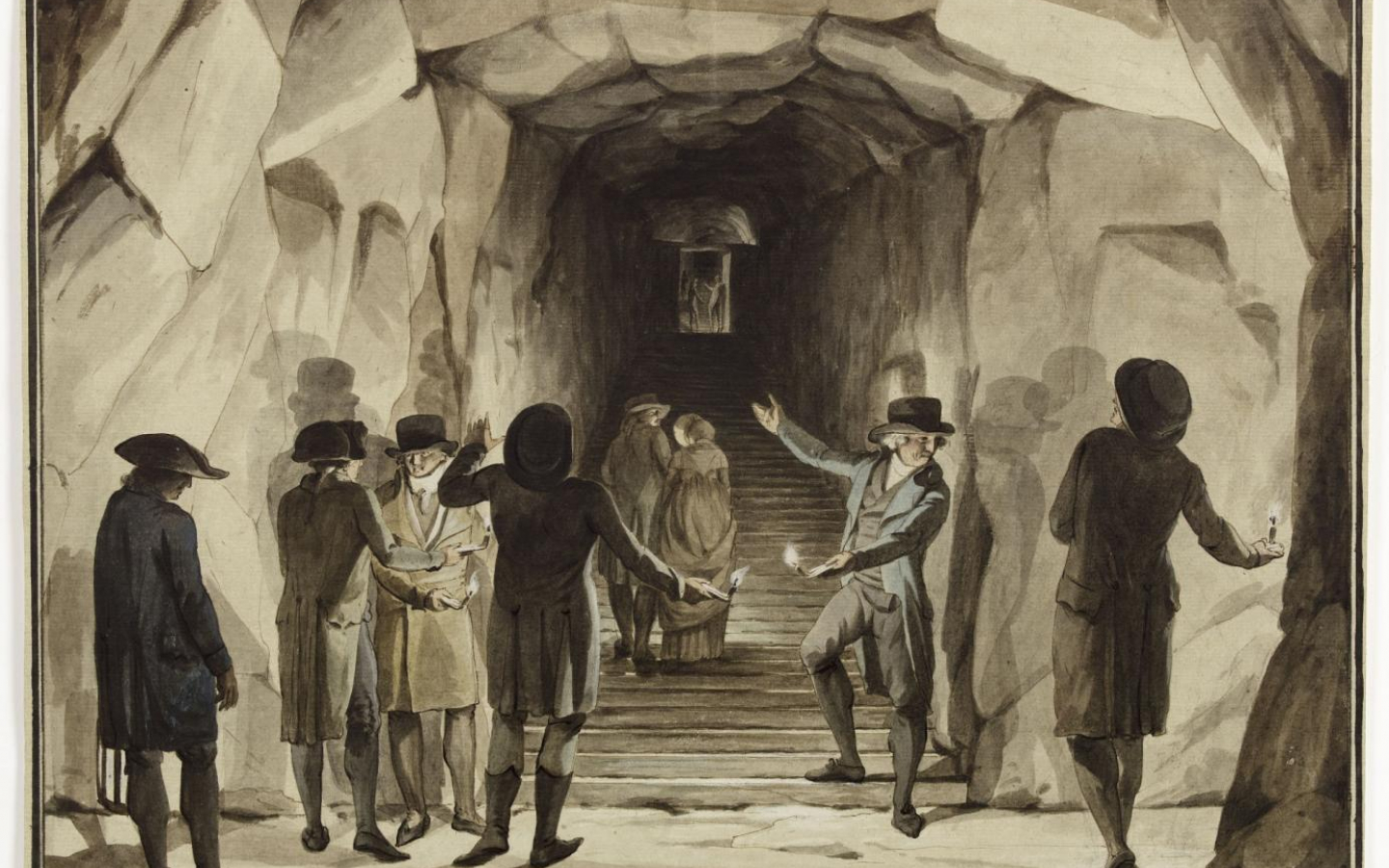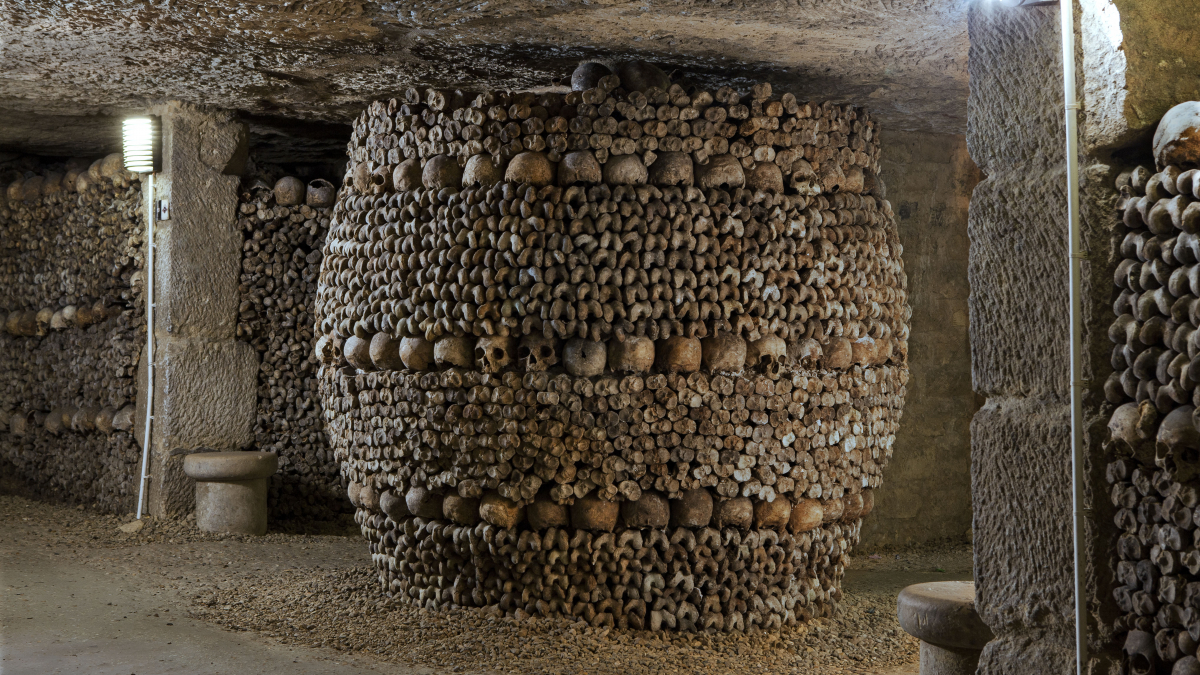
Site history
The history of the Paris Catacombs starts in the late eighteenth century, when major public health problems tied to the city’s cemeteries led to a decision to transfer their contents to an underground site.
Paris authorities chose an easily accessible site that was, at the time, located outside the capital: the former Tombe-Issoire quarries under the plain of Montrouge. In operation since at least the fifteenth century and then abandoned, these quarries were a small part of the labyrinth that extended under the city over approximately 800 hectares. Preparation of the site and the organization of bone transfers were entrusted to Charles Axel Guillaumot, an inspector at the Department of General Quarry Inspection. The mission of this department, which had been founded on April 4, 1777, by Louis XVI, was to consolidate the abandoned quarries following major collapses of the ground under Paris in the mid-eighteenth century.
The first evacuations were made from 1785 to 1787 and concerned the largest cemetery in Paris, the Saints-Innocents cemetery, which had been closed in 1780 after consecutive use for nearly ten centuries. The tombs, common graves and charnel house were emptied of their bones, which were transported at night to avoid hostile reactions from the Parisian population and the Church. The bones were dumped into two quarry wells and then distributed and piled into the galleries by the quarry workers. Transfers continued after the French Revolution until 1814, with the suppression of parochial cemeteries, such as Saint-Eustache, Saint-Nicolas-des-Champs and the Bernardins Convent, in the center of Paris. They were begun again in 1840, during urban renovation by Louis-Philippe and the Haussmannian reconfiguration of the city from 1859 to 1860. The site was consecrated as the “Paris Municipal Ossuary” on April 7, 1786, and, from that time forward, took on the mythical name of “Catacombs”, in reference to the Roman catacombs, which had fascinated the public since their discovery.
Starting in 1809, the Catacombs were opened to the public by appointment. A register was placed at the end of the circuit, where visitors could write their impressions. It was filled very rapidly because these visits had quickly become a success with both the French and foreigners. As the years passed, the ossuary became the resting place of many illustrious individuals. In 1787, the Count of Artois, the future Charles X, visited the site in the company of a group of court ladies; in 1814, Francis I, the Austrian emperor, took a tour there; and in 1860, Napoleon III descended into the catacombs with his son.
During the nineteenth century, visiting arrangements constantly changed, from total closing to monthly or quarterly openings. The Paris Catacombs are now open to everyone without requiring an authorization and welcome nearly 550,000 visitors yearly.

Chronology
– - 53 million years ago: end of sedimentation; Paris and the surrounding area are a vast swampy plain.
– - 47 million years ago: the sea covers the north of France, which had been flattened by erosion; start of formation of the Lutetian banks.
– First century A.D.: first open-pit quarries.
– Fourteenth century: first underground quarries.
– 1774: severe collapse of Rue Denfert-Rochereau; 300 meters were swallowed up.
– September 15, 1776: Louis XVI signs a decree that definitively prohibits extracting material from under public roads.
– April 4, 1777: Louis XVI creates the Department of General Quarry Inspection, which is in charge of protecting Parisian quarries.
– 1780: closing of the Saints-Innocents cemetery.
– April 7, 1786: benediction and consecration of the Tombe-Issoire quarries, which become the municipal ossuary known as the “Catacombs”.
– 1787-1814: transfer of bones from the parochial cemeteries of Paris.
– 1809: opening of the ossuary to the public.
– 1810-1814: rearrangement of the ossuary by Inspector Héricart de Thury.
– 1860: last bone deposits following urban development undertaken by Haussmann.
– 2002: attachment of the Catacombs to the Carnavalet Museum – History of Paris, which continues to promote the site.
– 2017: inauguration of the new exit and the bookstore-boutique.
– 2019: inauguration of the new entrance in the restored Ledoux house.